In this episode I give you simple and effective tips to use to create time to make your music, even if you don’t have any.
I started out as music being my ‘side hustle’. I would work to pay the bills during the day and come home and write my music in any free moment I could.
I created time to write.
And I did it as often as I possibly could. Little and often being the mantra of the moment.
Transcript
[Intro music]
Hey guys, welcome to session number 6 of the Trailer Music Composer’s Podcast. In this session I’m gonna be diving into ideas of productivity and specifically time management. A lot of my students and composers who contact me have full time jobs, or at least part time jobs and families, you know, you name it. They’ve got tons of other commitments and they say to me, ‘How do you produce so much when you have so little time to do it?’ Because admittedly, it’s almost like I have a fulltime job. I look after my kids with my wife. We have lots of fun family days out so I don’t really like to work a lot, because I want to be there with my family. So I only have a couple of hours a day. And they ask me, ‘How do I produce work when I don’t have any time to do it?’
The first thing is, do you really have no time? Or do you have time that is allocated for something else? Because obviously the first thing you need to look at is where you spend your time. I used to teach before I became a full time composer. I used to teach music in lots of schools. The way I used to work was I would teach during the day and then I would write my music in the evenings. Sometimes when I was working, when I first started working in trailer music, this was quite a while ago now, I was working with a company in LA and they would send me a brief at 6 in the evening, and I would then stay up until the wee hours writing it then. So it was a case of me sculpting the time out of the time that I had. And that’s what you need to do. You need to address your priorities first. What is it you want to achieve? If you want to write music, but you don’t feel like you have time, you need to just readdress how much time you think you need for music. Because actually, sitting down for 20 minutes a day, you’d be incredibly surprised how much you can produce in that little time.
This kind of ties in with the last episode where I was talking about ‘done’ being better than ‘perfect’, because this helps those of you who don’t have much time to write. Who have a full time job, who have families, who have tons of other commitments, because we’re all busy. If you focus on getting stuff done, then you can say to yourself, ‘Today I’m going to sit down for half an hour and write some music.’ Then if you do that, you are then committing to yourself, you’re committing to your music. You are then gonna find it easier to achieve that again. That is the first step to finding the time. It’s more like creating the time, not finding the time. You have to create the time because it’s an active thing where you decide that this is gonna happen then. The kids have gone to bed, before I sort of binge-watch TV, I’m going to create 30 minutes of time to do some music. ‘Hold on, once I’ve loaded up my computer that’s 25 minutes! Yeah, great.’ That’s when you have a template. You should have a template, or at least a go-to selection of presets so that as soon as you’ve loaded up your session, you can go bam, bam, bam, bam, bam, I’ve got 10 instruments that I know I love the sound of and I know I find inspiring, and I can just write. Ok?
Once you’ve carved that time, created that time for you to write, you then need to have your presets, your templates, all these little shortcuts that help you get straight to the writing. Please don’t make the mistake of loading up your emails. I do this all the time. I sit down and go, ‘I’m going to write today. But first, I’ll check my emails!’ Uh-Uh. Stupid mistake, because then you just—it’s a rabbit hole of doom. Emails. Just go in, open up Logic, Pro Tools Live, Bitwig, whatever it is that you’re working with. Load up a template, load up your presets, boom! You start to write. Ok?
The first thing you might need to do is set aside 20 minutes to create a template. I’m sure you can find out—I mean I have lessons in my courses about creating templates because they’re so important. Especially when producing albums or producing project work, to have a homogenous sound in your tracks. For those of you who have got access to my courses, or if you want access to my courses, go to the Trailer Music School and you can get onto one of those courses and I’ll show you how to do templates. But you can find it on YouTube, whatever. Find a way to create 20 minutes, give yourself a template so that when you have created that time, even if it’s just 10 minutes. Even if it’s just 10 minutes, you can load up a template and you can chuck a chord sequence in there.
The other thing you then need to start reframing—this kind of ties in again with Done Is Better Than Perfect, is you have to start reframing your idea of the structures of pieces of music because you can structure a piece of music in a matter of maybe a minute, tops. You can structure it using a region, you can structure it using markers, you can structure it using chord progressions, you can even structure it using hits. I do that in my … training music course. I show people how I structure a track using hits. Because then, you know what? You’ve got the structure out of the way. You don’t have to think about it. It’s kind of like when you do a jigsaw puzzle and you find the corner pieces, you’re like, ‘This is just going to fall into place now I’ve found the corner pieces!’ You know what I’m saying? Or maybe it’s just me that’s very passionate about finding the corner pieces of puzzles. But that’s what you need to do. So you’ve carved your 30 minutes, you’ve got your templates and your presets, you then, bam, load in your structure.
Now the reason I’m saying it like this is because I want you to acknowledge that yes, it’s difficult to find the time, but you can and will create the time to create a piece of music. Even if it’s a sketch, because I have had sketches placed on trailers. And also, the other thing is, the amount of times I’ve had stems placed on trailers. And the stems are basically just [noise]. It’s just an interesting [noise]. Or [noise], boom, literally. Two grand. So that’s what I want you to think about. You now need to reframe your idea of what a finished piece of trailer music is. A lot of the problems I think stem from people assuming when you’re writing trailer music you have to write full on Two Step From Hell epics. Yes, if you wanna do that, great. And you know what? You listen to Two Step From Hell, you could structure their tracks as like a 4 bar loop, or a 4 chord progression that just loops for 2 and a half minutes. Obviously there will be slightly different sections and some variations, but at its core it’s a 4 chord sequence. The amount of trailers I listen to and get sent to me as references for albums that have 4 chords repeating all the way through. This is the essence of everything we do. You listen to classical music, pop music, the amount of tracks and pieces of music that are just the 1st chord and the 5th chord. Boom. That’s your piece of music. The rest is just variation. That’s what you need to now think about. How can I give the bare bones to my music to create a whole track?
So for instance, I’ll give you a chord progression that you can use. This is the chord progression I hear all the time. We’re in a minor key, so say it’s—let’s go C minor. I’m in C minor, it’s the first chord, C minor. Then if I could sing the notes, I don’t have perfect pitch, I barely have pitch when I’m singing. It starts in C minor, then we go to the flattened major 7th chord. So in this case it’s a B flat major. Then we go to a flattened 6th, it’s a major again so in this case it’s A flat. And then we go to the 5th chord as a dominant. In this case it would be a G. What you’re doing there is—the lovely thing about that progression is that when you land on that dominant you are shifting the expectations because you’ve had a B flat in there your expectation is that it’s going to go on to be a G minor chord, but because it then switches to a G major it then gives you the tension to then return to that C minor. I hear that in so many trailers. It was in, I think about 3 of the Endgame trailers, that chord sequence.
This is the thing, we’re all dealing with the same chord sequences. We are all dealing with the same notes, we’re all dealing with the same rhythms, same progressions. So don’t be afraid just to be like, 4 chords, bish, bash, bosh. And then loop them for 2 and a half minutes. This is the thing, it sounds ridiculous when I say that, but that’s what it is. It’s like when you learn a twelve-bar blues and you realise, ‘Oh my goodness, all of these songs have the same chord sequence looping’. They even have the same melodies and the same blues … on the guitar. They have the same things, and that’s where you get the stylistic things going on. That’s how styles and genres sort of become apparent, because everyone starts using the same patterns, the same loops, the same progressions. It’s just fascinating to hear. But this is the thing for you: your track can be 4 chords. Your track can be 2 chords. There was a trailer for, I think it was Glass, it wasn’t my track by the way, it was another track. It was a trailer for Glass that was— again this progression is everywhere. The first chord as a minor, so we’re in a minor key. So let’s go C minor, we are in C minor, and then the major flattened 6th. So in this case it’s the A flat. So we are going from C minor to A flat. C minor to A flat. It was that the whole way through. But you know what? It didn’t matter. It doesn’t matter, because they captured something special with the rest of the way they treated those 2 chords. This is where it comes down to what you can add to your tracks. That’s why it’s all about the 5 rules. How can you put yourself into your music? How can you create impact? Because at the end of the day, you’re gonna be writing a track with the same chords as somebody else, same as somebody else, somebody else, somebody else.
Especially with action sound design, we are all using risers, we are all using hits, and we’re all using [noise], and we’re all sort of staying in the same keys. What can you do to make it stand out? So, now you’ve created your 30 minutes, you have your template because you looked it up or you went on one of my courses, now you have your presets, and now you’ve laid out your structure for your entire track. And do you know what? That took you 5 minutes. You now have 25 minutes to make these 4 chords into something more resembling a trailer cue. This is the beauty of it, this is where you can go, ‘Oh, ok, this is coming back to one of those rules again’, which talks about having the acts. And that’s what you can do, you can go, ‘Ok, well act 1 is gonna be sparse. So maybe I just have a drone in act 1, and I have a piano picking out the tonality of the chords’. So maybe my drone is in C in act 1. [noise] I dunno what that is! Then I have a piano picking out the E flat for the C minor, and then I have the piano playing picking out the D and the F for the B flat. Whatever you want. You’re thinking minimally in the first act.
Then in the second act, you can now introduce pace, introduce dynamism. How can you introduce pace, change, tension? You could even just say, ‘Maybe I’m just gonna sound my full chords in act 2.’ Those chords are gonna be played with simple C, E flat, ostinati that repeats throughout the whole thing. That’s another trick, just having ostinati. Do-do-do-do-do-do-do-do-do-do-do-do, that just repeats. Then you’ve got your—it’s actually really quite refreshing talking about music away from a computer. Anyway, I digress. You’ve got your progression, you’ve done your minimal intro. Now you’ve got your act 2 where you’re introducing the full chords played by, I don’t know, maybe just a string ensemble. All quite low. You introduce an ostinati to bring pace, and maybe you introduce some sort of rumbles or taiko strikes on the beat. And I don’t mean 4 4, I mean like on the bar, maybe even on the 2 bar or 4 bar mark. Then ok, I’m just gonna leave that, done. Then you get to act 3, and you go, ‘Oh, I’ve still got my 4 chords going, how can I lift this?’ That’s when you bring in some bigger drums playing a specific rhythm. Maybe if all the taiko strikes were like ‘Boom’ every 2 bars. ‘Boom’.
Then in the 3rd act it’s like ‘Boom…bum-bum-bum-bum. Boom.’ Something like that. It’s very simple. Then you just go, ‘Ok, drums done.’ Because everything else is just gonna be variations of that. Then you go, ‘Ok, well I’ve got my 4 chords, maybe I just put them in the brass. Except instead of the brass playing the 4 chords, I’m gonna give them [noise].’ To give impact, you know? [noise] That type of thing. Then you wanna have your melody start to come in. Or something different in act 3. The melodies are nice because they take act 3 into the emotional, into the spacious, into the dynamic. You have these soaring string melodies, or heroic horns, or you can just have simple pianos. Bing, bing. Something like that. It’s kind of like the melody is representative of the characters narrative over all of the chords that you’re playing. All of the chords are like all the mass of everything going wrong, but the melody is the character staying strong and sticking through the whole shebang. And there you have it!
Let’s say that took you 15 minutes. You have your intro, which is just a drone with a couple of notes, hinting at the chords. You have your second act, which gives you something interesting, difference in pace, and some hits to give it a more cinematic nature. And then you have act 3 which brings in some different flavours and colours from the orchestra, whether it be …, or brass chords, or even choir. Whatever it is, because everything else from here, once you’ve got your chords and your melody, and your main sort of rhythm, everything else from there is just kind of the same thing. You go, ‘Ok, well I’ll put some choir in.’ Ok, what are the choir gonna be doing? The choir is going to be doing those 4 chords, aren’t they? Or they’re gonna be doing a counterpoint melody, that’s the only other thing I could probably suggest that you do that is different. At the core of it is having a counterpoint melody. A secondary melody to your primary melody. Then at the very end of your track, just because I often leave this one out, we wanna have a finish. Maybe we’re gonna use our last 10 minutes for this, where we go, ‘Ok I’ve done my—I’ve sketched out my track now. I’ve sketched out the 3 acts. Let’s give me a finish.’ So you’ve got your C minor, B flat, A flat, G major 7, so what you’re gonna do is you’re gonna extend that G major 7. So you’re going to go [noise]. Drop. [noise] Back to the C minor. And there you have it.
You have officially sat down for 30 minutes and essentially written a cue. Because everything else from there is kind of just like putting layers on. The drum rhythms—once you’ve got the main rhythm out the drum rhythms are just gonna be slight variations, slight accents, maybe some roles here and there. Maybe you’ll bring in table slaps, or even just yourself tapping a glass on the 8th note just to give it some more pace. It’s all very very simple stuff that you’re gonna add on top of it, but what you have done here is you have reframed your idea of writing music. Of this whole ‘Oh I’ve got to come up with a perfect riff that no ones come up with. I’ve gotta come up with a chord progression that’s original. I’ve gotta come up with something that’s just perfect’. You don’t. Just give yourself a break. You’re just writing some lovely music, and you’re just using the same chords that we all use. Just obviously be careful not to actually steal other people’s ideas. I know we all use the same chord sequences, and the same melodies, that’s almost an entire podcast in and of itself. The dangerous nature of copyright these days because more and more people are copyrighting more and more music, which means that there’s less and less music that you can write. Ah, calm. Just go ahead and do those things I’ve said in 30 minutes.
Remembering all the advice I’ve given you so far, just let the ideas roll. You’re just writing, you’re not editing. And what I mean by writing: you’re just putting ideas, you’re just throwing it on the wall and seeing if it sticks. If it doesn’t stick, who cares. Throw more on the wall. Then you are letting it be done. You have sketched out an entire track, chord progressions, structure, basic rhythms, and a melody, in half an hour. It might take you a few turns to get quick at—especially those of you who chase perfection, to stop chasing perfection. It might take you a while to switch that negative voice off. But once you do, the freedom of writing music, it’s like the first time you pick up an instrument and go, ‘Oh my goodness, this sounds amazing, even when I’m playing it terribly’. Because we’re all here because we love sound and we love music. You wanna keep that there at the forefront. Don’t let the critic in. That’s why you kind of think to yourself, ‘I need to have loads of time to write music’. Because you let that critic take charge, that critic sits at the back going, ‘No that’s rubbish. No, no, that sounds not right. Oh, that synth patch is awful’. Who cares? If the synth patch is wrong, you can change it. I mean, that’s the beauty of it. If the ostinato is wrong, you can change it. But you’re not gonna do that when you first lay the idea down. You’re gonna let the idea be planted as a seed.
If you wanna take that track further, I can’t really tell you how to do that in great detail as I’m walking around on my phone. Again, sticking to that ‘done is better than perfect’ notion, but what you can do, obviously, is go to my YouTube channel. Go to other people’s YouTube channels! There’s loads of people showing amazing stuff. Obviously mine’s specific to trailer music, so if you wanna learn trailer music, go to my YouTube channel. Check out my videos, specifically my walk throughs of my existing tracks because they’re the ones that have been placed on trailers. If you wanna know more, go to the Trailer Music School, sign up for membership, join the community, have some banter, you know, hello, hello hello! But in the meantime create a small amount of time, set your templates, your shortcuts basically. Your shortcuts, your templates, your presets. Get a structure going. Basic structure. You could just go 30 seconds, 45 seconds, 1 minute 15, for each act. It doesn’t matter. Even if your track is 2 minutes, it doesn’t matter. Most publishers like it to be 2 and a half, 3, maybe even 4, but you’re just having some fun and writing. You’re just practicing your art, you’re practicing your skills, you’re practicing harnessing your own creativity and freedom.
Then once you’ve got the structure, lay down a chord sequence. Lay down beats, whatever it is you wanna do, and just loop it. Let that idea go that looping is cheating. Let it go. No one cares. Just put down a 4 chord sequence, you can always change it. And you will! Then you can always add variations, all that jazz, but you wanna have something there so that you can then tell yourself at the end of the session, ‘I did it! I made time for my music. I am worthy of making time for myself. And hey, if I can make time for my music, perhaps I can make time to do an album. Perhaps I can make time to contact a publisher and get my music out there. And perhaps, I can get more trailer placements’. Or, if you’re already getting trailer placements, ‘Perhaps I can get more trailer placements’. I mean that’s the problem isn’t it, I find myself there. Even though I do get regular trailer placements, and regular awards, I still go, ‘Woah, where’s the next one?’ That’s human nature, isn’t it? Always looking at the horizon. But for you, and for me, I still try and practice this because I don’t have a huge amount of time, hence me walking around with my phone. Practice those things I’ve said.
I really hope you do do this. You should give yourself that time. It’s the pat on the back, it’s the award for yourself for being awesome. I really appreciate you for taking the time to listen, because you obviously don’t have a huge amount of time to do these things. So hearing me ramble for—I don’t know how long this has been going for now, probably I’d say 12 minutes, it’s probably about 20 minutes. I’m probably wrong on both accounts! Who cares? Thank you so much for taking your time to listen to this. If you enjoyed it, subscribe to the podcast, subscribe to my YouTube channel for more in-depth production tips for writing trailer music. Head on over to the Trailer Music School if you want to join our membership, and again thank you so much for listening, you are totally awesome!
[Outro music]


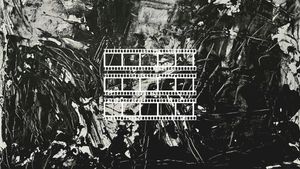
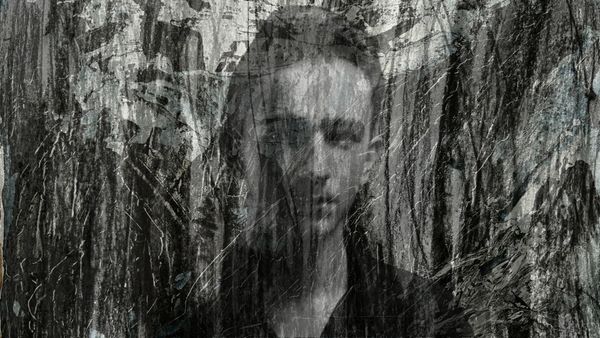

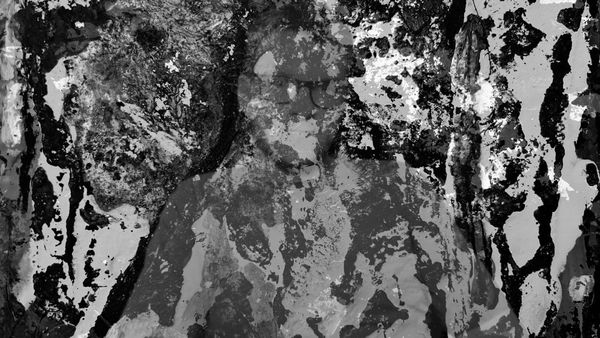
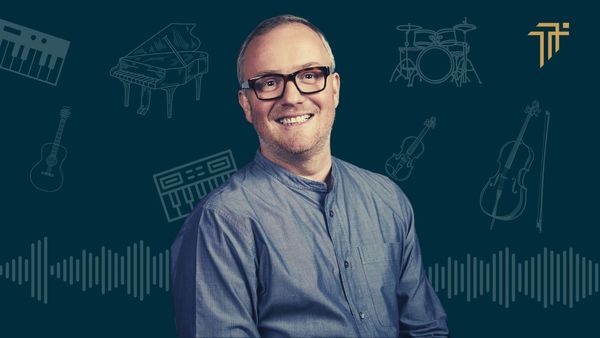
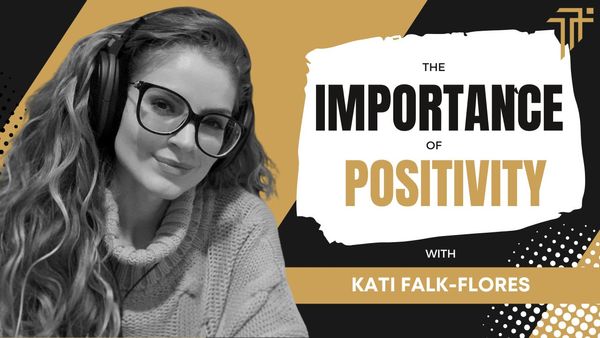
Member discussion